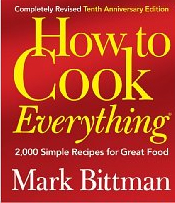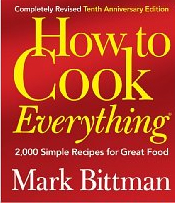Can Wine Ratings Be Trusted

- SUBSCRIBE
- ALREADY SUBSCRIBED?
BECOME A BONJOUR PARIS MEMBER
Gain full access to our collection of over 5,000 articles and bring the City of Light into your life. Just 60 USD per year.
Find out why you should become a member here.
Sign in
Fill in your credentials below.
I was pleased to note this title on the front page of the December 26, 2007 Washington Post. Finally, I thought, we will have a column that explores the merits and demerits of point scores for wine! Turning to the Food Section to the article indicated revealed a disappointment. Here was no analysis of point scores at all. The author said that point scores “allow the average person to choose a good bottle without knowing the soil characteristics of the Medoc.” The article then only concerned itself instead with “shelf talkers,” those pesky and ubiquitous excerpts from someone’s point score that give a few adjectives and a vintage year. The author contented herself with the discovery that many of these “shelf talkers” actually do not state the vintage year at all, or give the wrong one.
Point scores do not allow an average person to choose a good bottle of wine. What they do is offer someone else’s subjective opinion of that bottle. If your taste is different, tough luck. On this point, the French themselves are divided. Some vintners have assumed that all Americans prefer a highly alcoholic, forward wine, and have adjusted their sugars (and fermentation levels) accordingly. Often, such wines are given high scores, if that is the peculiar taste of the wine guru who does the scoring.
Classic Bordeaux, on the contrary, often is a leaner and more elegant wine, where taste and balance blend, rather than an instant taste rush. I fear that with high scoring wines, what many consumers are now drinking without even realizing it are custom made variations of fine wines geared to what is said to be the American preference, not the classics themselves. And they are paying through the nose for the privilege. That may be why I have so often seen people leaving a wine tasting with puzzled expressions. “I didn’t really enjoy that. Was I supposed to?” The real thing, as usual, is still made, and is still worth seeking. But if you concentrate on arithmetic rather than taste, you may never find it.
Point scores do not tell you when that bottle of wine would be ready to drink, a crucial point from several points of view. A high scoring wine that has not properly evolved may well be so laden with tannins that it will remain closed for years, before the fruit and tannins are in proper balance. Therefore, a wine scoring, say, 95, may not be an enjoyable experience at all, whereas a wine scoring 85 which has matured might well give great pleasure. That is why the bottle of wine that you have produced for dinner, after the initial oohs and ahhs, may have disappointed. Its point score is simply irrelevant. It wasn’t ready to drink.
I remember when I gave a formal dinner to officials in Poitiers, France, that they were astonished when the principal wine served was a fine St. Emilion, a Chateau Pavie 1980. Parker, for one, had said that 1980 was such an inferior vintage that for the most part he didn’t even bother to rate these wines. But I had been assured by the proprietor of the estate that they had made a good wine, albeit a light one, and the bonus was that it was ready to give pleasure far earlier than usual. The wine was a revelation to all concerned. Someone who only wanted to know point scores would never have tasted this fine (and inexpensive) wine.
The reverse is also true. I also remember, long before the days of point scores, in those stirring days of yesteryear when wine drinkers learned from their own experience, an evening when I served the most recent vintage of Chateau Lafite Rothschild. It was the 1959, and it set me back $8, cash, hard money. We enjoyed it, but wondered what the fuss was all about. Yes, that last taste showed real promise, but that was about it. We had, of course, committed the wine equivalent of infanticide. A few years ago a gathering of wine gurus at a tasting in San Francisco, the redoubtable Jancis Robinson amongst them, picked that same 1959 Chateau Lafite Rothschild as the finest Bordeaux of the 20th century. That bottle would now cost at auction well over 50 times what I had paid for it. And it would be ready to enjoy.
And make no mistake. When you drink a fine wine that has been well aged and is ready to be served, you have created a grand experience, comparable to hearing the finest music. (No point scores are yet given for Schubert, I notice.) That is well worth your time to discover and fully appreciate. When you have had such a fine wine and dining experience, by the way, you will have found a standard, one that is your own, to judge wines by. And wine tastings and dinners will no longer be a puzzle.
Not that the wine has to be the finest imaginable to be thoroughly enjoyable. We had at Christmas a bottle of La Chapelle de La Mission Haut Brion 2001 with our roast beef. It was marvelous, full of pleasant plummy flavors, a lighter approximation of the grand vin La Mission Haut Brion of the same year, at perhaps one-fifth of the cost. The best in wine should not be the enemy of the good in wine, although that also happens through over reliance on point scores.
Point scores, of course, also do not tell you anything about the match with food that is appropriate for the wine. Should it start the meal or accompany a later course? Would its flavors be too fine, or too sweet, for the dinner course planned? Here too, the wine enthusiast will want balance and taste, not arithmetic.
And so I must say in this festive season, “no, Virginia,” there is no magic formula for assessing wines without tasting them. It is not about the “soil characteristics of the Medoc,” which are fairly uniform in the best producing areas anyway (the gravel, on the other hand, does make a difference), but it might concern the famous 1855 Classification as an early and still reliable indicator of high quality. And starting from there, some research on the net about given wine chateaux will be an entertaining and rewarding pleasure. The more you learn, the more enjoyable wine becomes, and the less you will lean on the crutch of point scores, and their increasingly inaccurate “shelf talker” derivatives.



